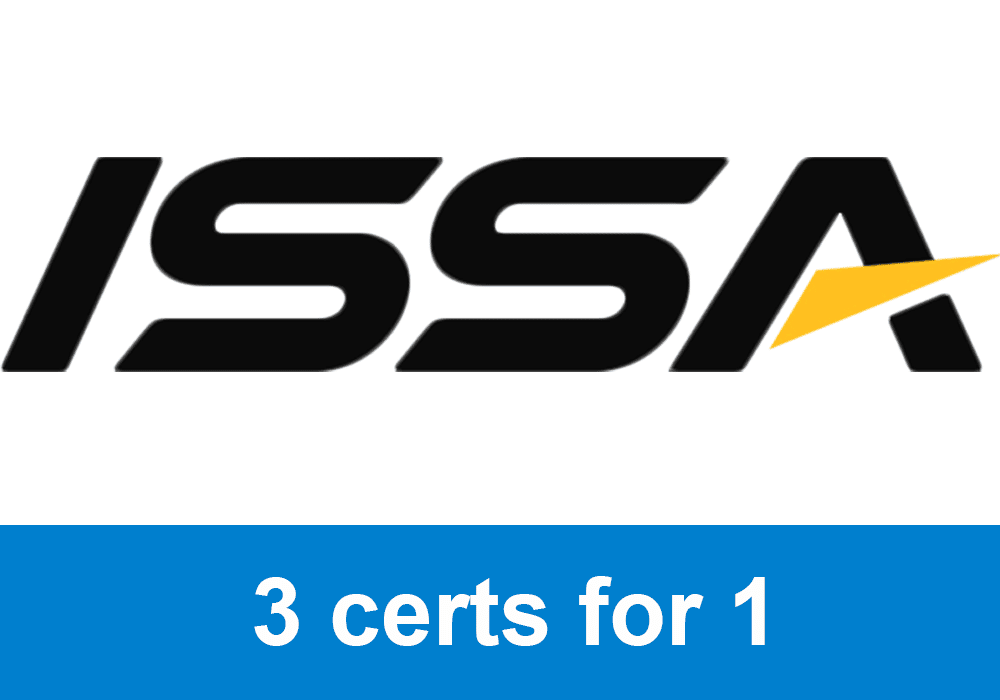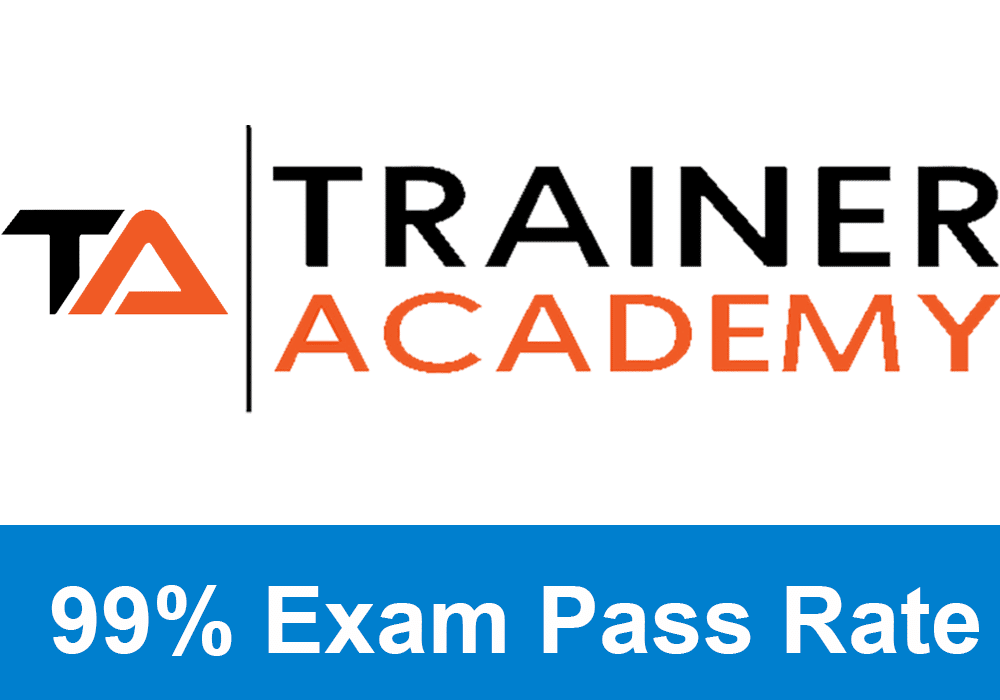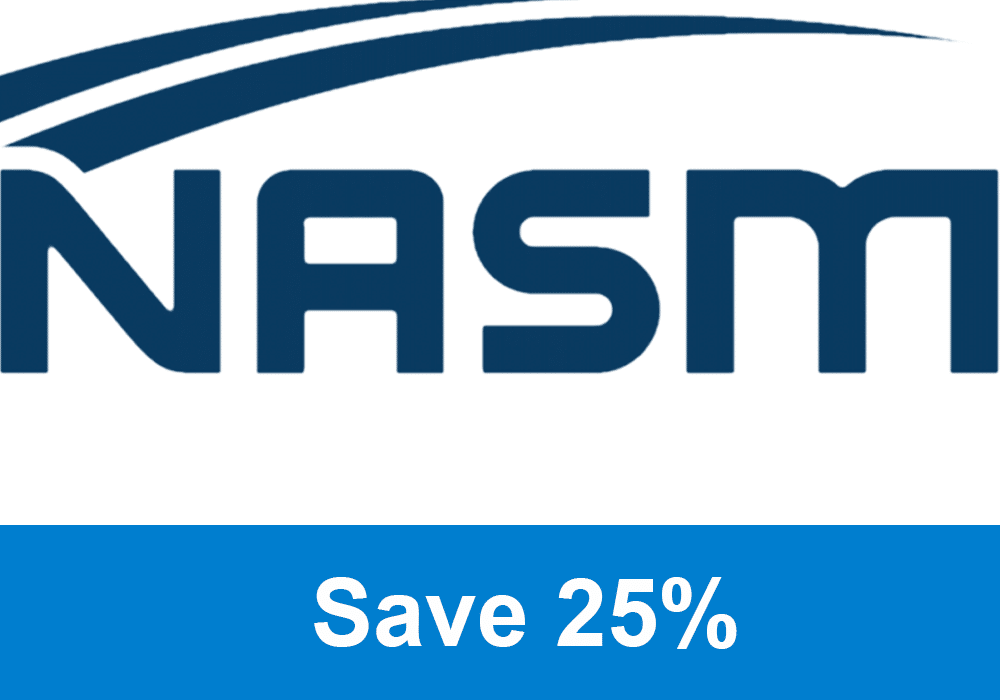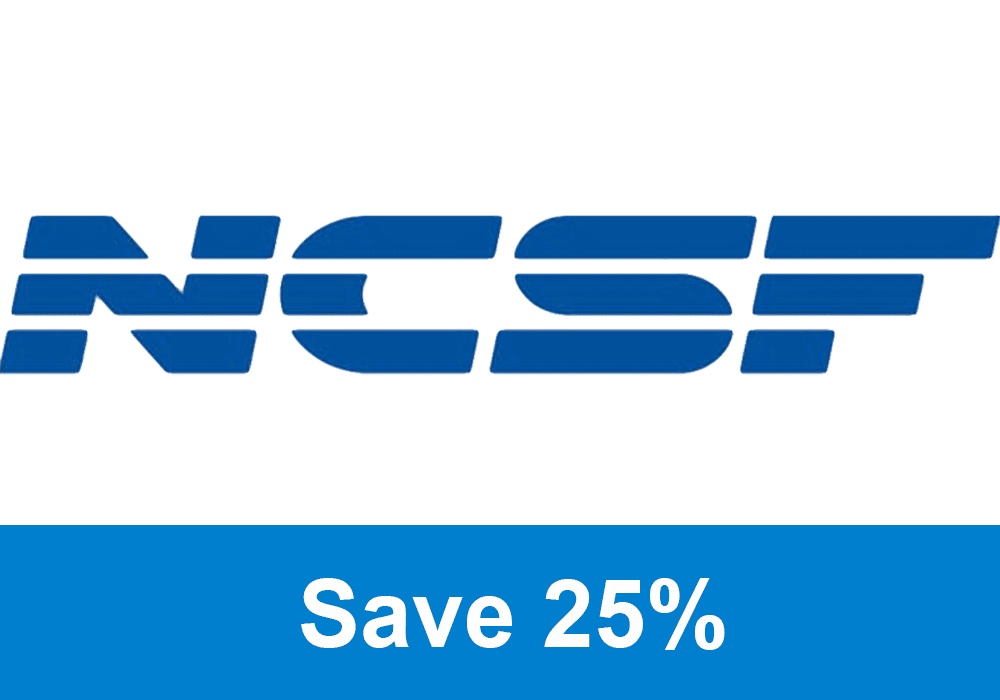![What is a NASM Mesocycle ([year])? 3 NASM Mesocycle - trainer designing a workout program based on NASM mesocycle](https://www.ptpioneer.com/wp-content/uploads/2024/04/NASM-Mesocycle-1024x574.png)
A NASM Mesocycle is a specific period within a training program designed to improve particular aspects of fitness through progressive overload. In this article, I dive into the benefits of mesocycles, how to structure them for various fitness levels, and why incorporating them into your routine is essential for avoiding plateaus and enhancing results. By the end, you’ll have a comprehensive guide to take your fitness journey to the next level.
This NASM cheat sheet, from Trainer Academy, is an excellent option for anyone preparing for their NASM personal training exam.
If you’re studying for your NASM CPT exam, mastering the concept of mesocycles is vital. This article will provide you with in-depth knowledge and practical examples that will not only enhance your understanding but also help you excel in your certification exam.
As a NASM-certified trainer and fitness professional with over 12 years of experience using periodization with my clients, here is an overview of the NASM mesocycle system as found in their Optimum Performance Training (OPT) model.
After reading this article, you should know what a mesocycle is, and how NASM uses them in their version of training periodization.
If you’re prepping for the NASM CPT exam, I recommend to get a good NASM practice exam prior. NASM flashcards can also be of use as get ready for your test.
I recommend looking at Trainer Academy for the best NASM CPT study materials. These will reduce your study time by 50% and you get an exam pass guarantee. Read my full review of them here. You can also save $100 on their MVP study system with this code: PTPSUB
Definition and Purpose of a NASM Mesocycle
NASM defines a mesocycle as a period of time within a long-term training program, typically lasting several weeks to a few months. Mesocycles focus on specific training goals and adaptations, such as strength, power, or endurance. They are often structured with different phases, including buildup, intensity, and recovery periods.
Mesocycles can vary in length and specificity based on an individual’s fitness level, sport, and training objectives.
NASM incorporates the concept of mesocycles in their training programs to optimize performance and minimize the risk of overtraining.
NASM uses their OPT Model to optimize and plan mesocycles. In the NASM Personal Training Certification, NASM refers to each mesocycle in the OPT program as a “phase.”
By strategically organizing training into mesocycles, NASM aims to optimize progress and minimize the risk of overtraining or injury.
By implementing mesocycles, NASM offers numerous benefits such as improved performance, enhanced recovery, and the ability to tailor training plans to individual needs.
All the top personal training certifications cover the concept of mesocycles; however, NASM gives you one of the best complete overviews.
Planning and Designing a NASM Mesocycle
Planning a mesocycle in the NASM (National Academy of Sports Medicine) model involves a systematic approach to periodization, ensuring optimal progression and adaptation for an individual’s training program.
Firstly, it is essential for anyone becoming a personal trainer to assess the client’s current fitness level, goals, and any specific needs or limitations.
Based on this assessment, the mesocycle can be divided into distinct phases, each with its own focus and intensity. These phases typically include the preparatory phase, where general conditioning and foundational strength are built; the hypertrophy phase, which aims to increase muscle size and endurance; the strength block, focusing on maximal strength development; and finally, the power phase, emphasizing explosive movements and sport-specific skills.
Mesocycle order can vary based on goals, but NASM’s OPT system incorporates 5 distinct phases: stabilization endurance, strength endurance, hypertrophy, maximal strength, and power.
Whereas other programs like the ISSA Personal Training Certification offer a more flexible approach to periodization, NASM’s OPT model appears more rigid.
Exclusive PTP CPT Offers |
||
|---|---|---|
Most Popular Cert | Best Online NCCA Cert | Best Study Materials |
Gold Standard Cert | A Good Option | Best CPT for you?  |
Based on this model, you move people through these training phases in order to progress them towards their goals safely.
If you’re a group exercise instructor, you probably won’t ever use mesocycles, and NASM doesn’t mention them in their Group Exercise Instructor Certification. Mesocycles are one of the benefits of private personal training: you can play out blocks of training to focus on individual goals at once.
Inside each mesocycle are weeks of training, which are called microcycles. Microcycles are essential building blocks within each mesocycle, allowing individuals to focus on specific aspects of their training and gradually increase their performance.
Stabilization Phase
The stabilization phase helps improve muscle imbalances, core stability, prepares the muscle fibers, tendons, ligaments, and joints for the demands of training, establishes correct movement patterns and exercise technique, and improves overall cardiorespiratory condition. Corrective exercise programs often spend a lot of time in the stabilization phase. NASM covers this extensively in their Corrective Exercise Specialization.
This phase employs:
- Low-intensity, high rep training
- Challenging the body’s stability and proprioception.
- Low to moderate set volume
- Slower tempos
- Longer rest periods
Strength Phase
The strength phase includes three separate mesocycles for strength endurance, hypertrophy, and max strength.
This phase takes the stability you’ve gained from the stability mesocycle and applies it towards building overall muscle strength and size.
This is something that increases overall core musculature, increases the load bearing of muscles, tendons, ligaments, and joints, and increases motor unit recruitments and synchronization.
Strength Endurance
In this mesocycle the NASM-CPT framework has you do supersets, combining flexibility, core, balance, and resistance exercises for medium to high repetitions. This type of mesocycle helps to improve overall muscular endurance and stability, making it a great option for individuals looking to enhance their fitness level. Additionally, the combination of exercises targeting different muscle groups can help to prevent plateaus and keep the body continuously progressing.
This phase uses:
- Low to moderate set volume
- Moderate to high reps
- Supersetting strength and stability exercises
- Moderate and slow tempos
- Moderate rest periods
- Low to moderate session frequency
Hypertrophy
In the NASM hypertrophy phase, you increase the volume and lower the rest periods to force the body to build muscle. This can include increasing the number of sets and repetitions, as well as incorporating techniques like supersets or drop sets. The goal of this mesocycle is to create a challenging stimulus that promotes muscle fiber growth and strength gains.
This mesocycle includes:
- Moderate to high set volume
- Moderate repetitions
- Medium to high intensity
- Moderate rest periods
- Moderate to high frequency per muscle group
Maximal Strength
During the max strength mesocycle NASM tells you to lower the volume and increase the load on exercises. This leads to a higher rate of force production and motor unit recruitment. This type of training method is commonly used in sports performance and strength training programs. By strategically manipulating training variables, individuals can effectively progress and improve their overall athletic abilities.
- High number of sets
- Low reps
- Moderate-high intensity
- Explosive tempo
- Long rest periods
- Moderate frequency
Power Phase
In this phase, you increase velocity by combining strength and power exercises. These exercises typically involve explosive movements such as plyometrics and Olympic lifts. The goal of the Power Phase is to enhance an athlete’s ability to generate force quickly and efficiently, translating into increased speed and power on the field or court.
- Moderate volume
- Lower reps
- Low intensity (for speed), high (for power)
- Superset explosive tempo along with plyometric tempo
- Long rest intervals
- Moderate frequency
Setting Goals and Objectives for a Mesocycle in NASM’s OPT Model
Choosing the appropriate mesocycle and how to incorporate it into training comes from your client’s goals and objectives. If a client wants to increase overall fitness, you may spend a month in each of the NASM macrocycles.
By incorporating different training techniques and variations within each mesocycle of the NASM program, clients can effectively target specific fitness goals and continually challenge their bodies for optimal results.
If a client wants to mainly increase their overall endurance, you may spend larger chunks of time in that macrocycle. If the client wants to focus on bodybuilding, you’ll spend more time in a muscle growth phase and less in the endurance or stability mesocycles. The NASM Physique and Bodybuilding Coach Specialist goes through the best way to peak physique athletes.
Exclusive PTP CPT Offers |
||
|---|---|---|
Most Popular Cert | Best Online NCCA Cert | Best Study Materials |
Gold Standard Cert | A Good Option | Best CPT for you?  |
Clients interested in weight loss can take longer endurance and hypertrophy phases. Examples of exercises that can be incorporated in the longer endurance and hypertrophy phases of the mesocycle for weight loss clients include circuit training, high-intensity interval training (HIIT), and compound exercises such as squats, deadlifts, and lunges.
Athletes peaking for a power event will typically follow the standard pattern of endurance to strength to power cycles. The week before the competition they deload, and then start the pattern again afterwards. Power exercises you can use include the Olympic lifts, kettlebell training, and plyometrics. NASM details excellent information on how to use power exercises in the NASM Performance Enhancement Specialist.
The nice thing about using NASM mesocycles is that you can keep the training intensity high and still get successful results because you change the training stimulus. Before you start to plateau, you can switch to a different focus. If you don’t want to alter the exercises too much, you can also just change loads, volume and tempo and stick to similar compound lifts for most exercises.
NASM’s Approach to Assessing Baseline Fitness Levels
In order to pick which mesocycle to start with, fitness professionals should get a rough idea of each client’s strengths and limitations when it comes to their mobility and stability.
By testing a client’s endurance, stability, and power, you can make sure that it’s safe to begin with a strength or power phase.
NASM recommends using basic tests like the overhead squat assessment, the 12 minute run test, 1RM, and the YMCA bench press test to give you an overall picture of a client’s fitness.
Once you know an athlete’s strengths and weaknesses, you can use this information to decide if they need to focus on endurance, balance, strength, power or muscle building.
If a client is particularly weak in a certain area, it’s probably a good idea to spend some time developing this skill over a cycle of training.
In the NASM mesocycle model, you always move from the stages of endurance to hypertrophy to strength to power, but you don’t necessarily have to follow this strict order variation. To optimize athletic performance and achieve desired fitness goals, utilizing a mesocycle training approach is a dynamic process that allows for tailored programming and periodization based on an individual’s specific needs and desired outcomes.
Selecting NASM Exercises and Training Variables
Training variables you will deal with include reps, sets, weights (or levels of resistance), time under tension, number of workouts per week, and length of workout.
Based on your current mesocycle focus and goals, you may pick higher volumes of training along with varying types of exercises.
Exercise selection is also based on your time and equipment restraints. For example, if you’re trying to fit in a lot of volume in a session, you may use circuits so that the session stays under one hour.
Make sure not to pick too many exercises. It’s best to pick 1-3 main movements to focus on when it comes to progression per mesocycle, NASM recommends this extra focus.
Structuring Workouts within a NASM Mesocycle
NASM gives you multiple templates for scheduling workouts in their OPT model. They recommend that every workout include a warm-up, some core/balance/plyometric exercise, SAQ (speed, agility, quickness), resistance training, and a cool-down.
Here’s an example of a typical training session in the NASM OPT system:
![What is a NASM Mesocycle ([year])? 4 NASM example workout in a mesocycle](https://www.ptpioneer.com/wp-content/uploads/2024/03/nasm-mesocycle-workout.jpg)
A microcycle might include 3-4 of these sorts of workouts. NASM recommends that you include a good warm-up and some quality flexibility training in every workout. The basic CPT gives you an overview of stretching basics, but for more in-depth material you’ll want to check out the NASM Stretching and Flexibility Coach specialization.
NASM Progression and Regression Strategies
Tracking and monitoring progress during a mesocycle in NASM training is essential for optimizing performance gains and ensuring effective progression.
One effective method is to utilize a combination of objective and subjective measures. Objective measures include tracking changes in body composition through regular body fat percentage assessments and taking measurements of key muscle groups. Additionally, utilizing performance-based assessments such as strength tests, endurance tests, and power tests can provide quantifiable data on improvements in physical capabilities. Subjective measures involve self-assessment tools like rating perceived exertion scales, training logs, and subjective feedback from the individual undergoing the mesocycle. By combining these objective and subjective measures, trainers can gain a comprehensive understanding of progress made during a mesocycle in NASM training.
You can use linear periodization to progress in weights, where the weights, sets, or reps slowly increase over time, or a nonlinear progression like undulating periodization where the volume changes from day to day. Overloading is a key principle of the mesocycle NASM utilizes within their Optimum Performance Training system, allowing athletes to progressively increase the intensity and workload of their workouts to improve overall performance. There are a variety of different types of periodization methods, including conjugate training and block training.
For the most detailed explanation of different periodization methods, I’d recommend looking at the NSCA CSCS, which is one of the best strength and conditioning certifications.
You may need to take a deload week at the end of a mesocycle to avoid excessive fatigue as well. The principles of mesocycle programming, as advocated by NASM (National Academy of Sports Medicine), involve strategically manipulating training variables such as intensity, volume, volume, and exercise selection to achieve optimal results.
Monitoring and Adjusting the NASM Mesocycle
Adjusting volume and frequency within a mesocycle in NASM training is a crucial aspect of optimizing athletic performance. To effectively manipulate these variables, it is recommended to follow a systematic approach.
Firstly, determine the desired training outcome and establish specific goals for the mesocycle. Then, consider the individual’s current fitness level and training history to gauge their tolerance for volume and frequency. Gradually increase or decrease the volume by adjusting sets, reps, or load, based on the desired adaptation.
Similarly, a personal trainer can modify frequency by altering the number of sessions per week in the training plan. It is important for the coach to monitor a client’s progress closely and make adjustments accordingly to ensure continued progress and prevent overtraining.
One of the benefits of being a personal trainer is that you’re on the ground, seeing your client’s progress on a weekly basis. You can see when they’re too tired or need to push harder so you can make daily adjustments if needed to the volume and intensity of the workout.
Recovery and Rest Days in a NASM Mesocycle
During a mesocycle in NASM (National Academy of Sports Medicine), ensuring proper recovery and rest periods is crucial for optimizing performance and preventing overtraining.
To achieve this, NASM suggests incorporating active recovery days within the mesocycle, where low-intensity exercises such as yoga or light cardio work are performed to promote blood flow and aid in muscle repair.
Additionally, implementing strategic deload weeks throughout the mesocycle can provide extended rest periods to allow the body to fully recover and adapt to the training stimulus. These deload weeks can involve reducing training volume and intensity by 40-60% while still maintaining frequency to prevent detraining effects. So, you still lift, but you reduce the load.
During the mesocycle phase, it is important to gradually increase the training volume and intensity to optimize adaptation without exceeding the appropriate amount that may lead to overtraining and potential injuries. Part of the personal trainer job description is knowing when to back off so clients don’t overdo it.
Conclusion
Each personal training certification offers a different form of periodization. If you compare NASM vs ACE, you see that both these programs offer different patented systems to follow. For instance, the ACE Personal Training Certification has their Integrated Fitness Training (IFT) Model vs NASM’s OPT.
This is different from the NSCA or ACSM, which both give you their definition of mesocycles.
No matter which personal training certification you pick, you need to effectively structure a training program which implements the concept of mesocycles, defined periods of time consisting of multiple training blocks designed to target specific goals and enhance performance. NASM teaches this through their Optimum Performance Training system, which moves from stability to strength to power.
In each mesocycle stage of NASM’s Optimum Performance Training system, loading is gradually increased to challenge and improve both muscular strength and endurance over time, so you can create peak performance and help clients achieve their fitness goals with a periodized exercise program. Using the support of different mesocycles, people can access higher levels of fitness as you work different energy systems and modalities in chunks of time.
The more you can help clients achieve their goals, the higher your personal trainer income potential can go.
The nice thing about the NASM mesocycle system is how simple it is, especially for newer personal trainers.
NASM Mesocycle Frequently Asked Questions (FAQs)
How long does a typical mesocycle last?
How to progress intensity during a mesocycle in NASM programming?
Who can benefit from incorporating mesocycles into their fitness routine?
What is periodization?
Which periodization model varies volume and intensity each workout or week?
What is the concept of dividing the annual training plan into smaller segments, phases, or cycles?
What type of periodization uses changes in volume and intensity on a daily or weekly basis?
Type, frequency, time, and rest are examples of what aspect of fitness?
How long should the initial stage of your fitness program last?
References
- Clark, M. A., Lucett, S. C., Mcgill, E., Montel, I., & Sutton, B. (2018). NASM essentials of personal fitness training. Burlington Jones & Bartlett Learning.
- Adams, A. (n.d.). Periodization training simplified: A strategic guide: NASM blog. NASM. https://blog.nasm.org/periodization-training-simplified
- The NASM-CPT Podcast: Exercise Programming and periodization. NASM. (n.d.). https://blog.nasm.org/fitness/the-nasm-cpt-podcast-ep-14

 Have a question?
Have a question? 
Tyler Read
PTPioneer Editorial Integrity
All content published on PTPioneer is checked and reviewed extensively by our staff of experienced personal trainers, nutrition coaches, and other Fitness Experts. This is to make sure that the content you are reading is fact-checked for accuracy, contains up-to-date information, and is relevant. We only add trustworthy citations that you can find at the bottom of each article. You can read more about our editorial integrity here.